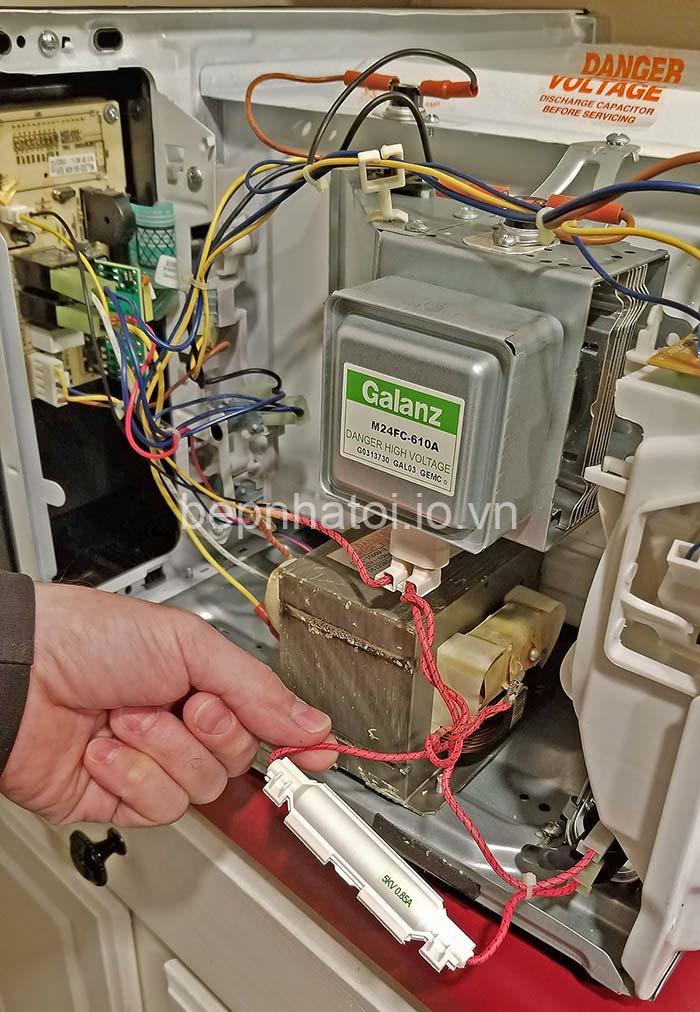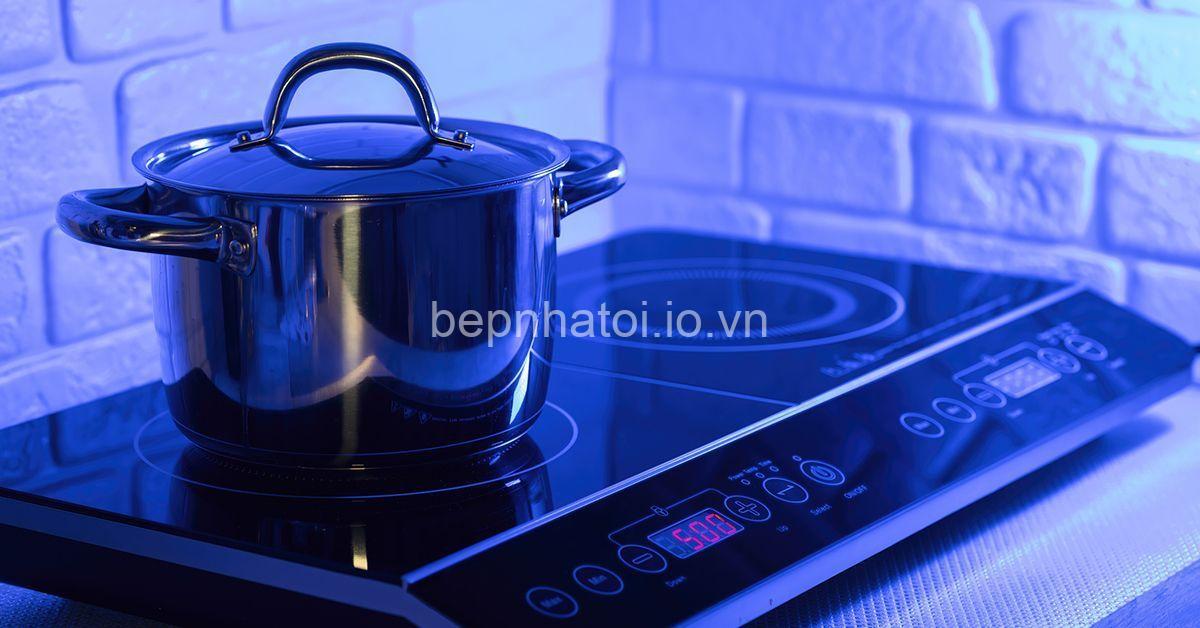
Microwave Not Heating Food? Find Out Why & How To Fix It!. In today’s article, bepnhatoi.io.vn will explore with you in the most detailed and complete way. See now!
Common Reasons Why Your Microwave Isn’t Heating Food
It’s incredibly frustrating when your microwave suddenly stops heating your food. It’s almost like your kitchen’s best friend is letting you down! To get to the bottom of this issue, we need to understand why your microwave isn’t cooperating. Let’s explore the most common culprits:
Power Issues:
-
Power Cord Problems: A damaged power cord can disrupt the flow of electricity to your microwave, preventing it from working. This issue can arise from a loose connection at the outlet, a broken cord, or even a tripped circuit breaker. It’s worth checking for these potential culprits first.
-
Power Supply Issues: If your power cord is in good shape, the problem might lie within the microwave’s power supply. This can involve a blown fuse, a broken magnetron (the key component that generates microwaves), or a faulty power transformer. These issues require a bit more technical expertise to diagnose.
Door Issues:
-
Door Not Closing Properly: Your microwave’s door acts as a safety mechanism. If it doesn’t close firmly, it won’t be able to generate microwaves. This could be due to a damaged latch, an obstruction in the door’s path, or a misaligned door. Always ensure the door is properly shut before starting your microwave.
-
Broken Door Switch: The door switch acts like a gatekeeper, preventing microwaves from being generated unless the door is closed. A broken door switch can prevent the microwave from starting, so ensure that it’s functional.
Control Panel Problems:
-
Button Malfunction: If you press a button on the control panel, but it doesn’t respond or acts erratic, then you have a button malfunction. This could stem from stuck buttons, broken buttons, or a faulty control board.
-
Display Issues: A blank, flickering, or incorrect time or power setting on the display usually points to a control panel problem. This might indicate a faulty control board or another issue related to the control panel’s circuitry.
Internal Component Failure:
-
Magnetron: The magnetron is the heart of your microwave, generating the powerful microwaves that heat your food. If the magnetron is faulty, it can lead to a lack of heating or even complete failure.
-
Waveguide: The waveguide acts as a conduit, directing the microwaves to the food. A blockage or damage to the waveguide can prevent microwaves from reaching the food.
-
Turntable Motor: The turntable motor is responsible for rotating the food, ensuring even cooking. A broken or jammed turntable motor could lead to uneven heating and ultimately affect your microwave’s performance.

Troubleshooting Steps for a Non-Heating Microwave
When your microwave isn’t cooperating, take a deep breath and start with the basics:
-
Basic Checks:
- Plugged in Properly: Double-check that your microwave is securely plugged in and that the outlet has power.
- Power Cord Condition: Inspect the power cord for any signs of damage, such as frayed wires, cuts, or loose connections. If you find any, replace the power cord immediately.
- Circuit Breaker: Check if your home’s circuit breaker has tripped, which can happen if the microwave draws too much power. If the breaker is tripped, reset it by flipping the switch to the “on” position.
- Door Closure & Switch Function: Make sure your microwave door is closing firmly and the door switch is working. You can check the door switch by placing a small object, like a toothpick, between the door and the microwave’s frame. If the light inside the microwave turns on, the door switch is likely working.
- Trying a Different Outlet: If you’ve ruled out the other possibilities, try plugging your microwave into a different outlet to ensure the problem isn’t with the outlet itself.
-
Advanced Troubleshooting:
- Visual Inspection: Carefully look inside your microwave for any signs of damage, like loose connections, burned wires, or food debris that might be obstructing the waveguide.
- Testing the Magnetron: This step requires a bit more technical knowledge and a multimeter. If you’re comfortable with electronics, you can use a multimeter to test the magnetron for voltage output. A faulty magnetron will likely need to be replaced.
- Testing the Door Switch: Use a multimeter to check for continuity when the door is closed. If the multimeter doesn’t show continuity, then the door switch is likely faulty and needs to be replaced.
- Testing the Control Panel: Check the buttons for responsiveness. If a button doesn’t work or is stuck, you’ll need to diagnose the issue with the button or the control panel. If the display isn’t working, you’ll need to inspect the wiring or the control panel itself.
Fixing a Microwave That Won’t Heat Food
Once you’ve identified the cause of the problem, you can take steps to fix it. Here’s what you can do:
-
DIY Solutions:
- Cleaning: Clean the inside and outside of your microwave thoroughly. Food debris can accumulate in the waveguide and affect heating.
- Checking & Tightening Connections: Inspect all wires and connections, ensuring they are secure and not loose. Tighten any loose connections.
- Replacing a Damaged Power Cord: If your power cord is damaged, you’ll need to replace it. Ensure that the replacement cord is compatible with your microwave.
-
Professional Repairs:
- Contacting a Technician: For complex issues, like a faulty magnetron, waveguide, or control panel, it’s best to call a qualified appliance technician.
- Identifying the Faulty Component: The technician will inspect your microwave and identify the faulty component causing the problem.
- Replacing or Repairing the Malfunctioning Part: Once the problem is identified, the technician can replace the faulty component or repair it if possible.
-
Cost Considerations:
- Repair Costs: The cost of repairing your microwave can vary depending on the issue and the cost of replacement parts.
- Microwave Age & Value: Consider the age and value of your microwave before deciding to repair or replace it. If your microwave is old and the repair costs are high, it might be more cost-effective to purchase a new one.
Preventing Future Microwave Problems
To keep your microwave in tip-top shape and avoid future heating issues, follow these simple tips:
- Regular Cleaning: Cleaning your microwave regularly is essential to maintain its efficiency and prevent problems. Wipe down the interior and exterior of your microwave to remove food splatters, grease, and other debris.
-
Proper Usage:
- Following Manufacturer Instructions: Always follow the manufacturer’s instructions for using and cleaning your microwave. This includes understanding the appropriate power settings, cooking times, and safe food items to microwave.
- Avoiding Metal Objects: Never place metal objects, such as aluminum foil or metal utensils, in your microwave. This can cause sparks, damage your microwave, and create a fire hazard.
- Avoiding Overheating: Don’t overheat your food. Follow the recommended cooking times and power settings for your food items. Overheating can lead to food burning and damage to your microwave.
-
Professional Maintenance: Consider having your microwave professionally serviced every few years to ensure that all the components are working correctly and to catch any potential issues before they become major problems.
Safety Precautions with a Non-Heating Microwave
When dealing with a malfunctioning microwave, safety is paramount. Follow these precautions:
- Do Not Attempt Repairs Without Expertise: If you’re not familiar with electrical appliances or don’t feel comfortable working on the microwave yourself, leave the repairs to a professional.
- Unplug the Microwave Before Inspecting: Always unplug your microwave before inspecting or cleaning it. This will prevent electrical shock.
- Avoid Touching Internal Components: Don’t touch any internal components of the microwave, even if it’s unplugged. These components can retain a charge and can be dangerous.
FAQs About Why Your Microwave Isn’t Heating Food
Why is my microwave not heating food, but the light still turns on?
This could indicate a problem with the magnetron, the waveguide, or the door switch. It’s best to consult with a qualified appliance technician for a proper diagnosis and repair.
Can I fix a broken magnetron myself?
Replacing a magnetron requires technical expertise and specialized tools. It’s highly recommended to have a professional technician handle this repair.
What happens if I keep using a microwave with a faulty magnetron?
Using a microwave with a faulty magnetron can be dangerous and could lead to fires or electrical shock. It’s best to have the microwave repaired or replaced as soon as possible.
Can I clean my microwave’s waveguide myself?
Yes, you can clean the waveguide using a damp cloth or a specialized microwave cleaning solution. However, be careful not to damage the waveguide during cleaning.
How can I tell if my microwave door switch is broken?
You can test the door switch using a multimeter to check for continuity when the door is closed. If the multimeter doesn’t show continuity, the door switch is likely faulty.
Conclusion
If you’re experiencing a microwave that won’t heat food, don’t fret! By understanding the common reasons for a malfunctioning microwave, you can start troubleshooting the problem yourself. Remember to prioritize safety and call a professional technician for repairs that require expertise.
Have you encountered a non-heating microwave? Share your experiences and any tips you have in the comments below. For more helpful information about caring for your appliances and your pets, visit bepnhatoi.io.vn.






